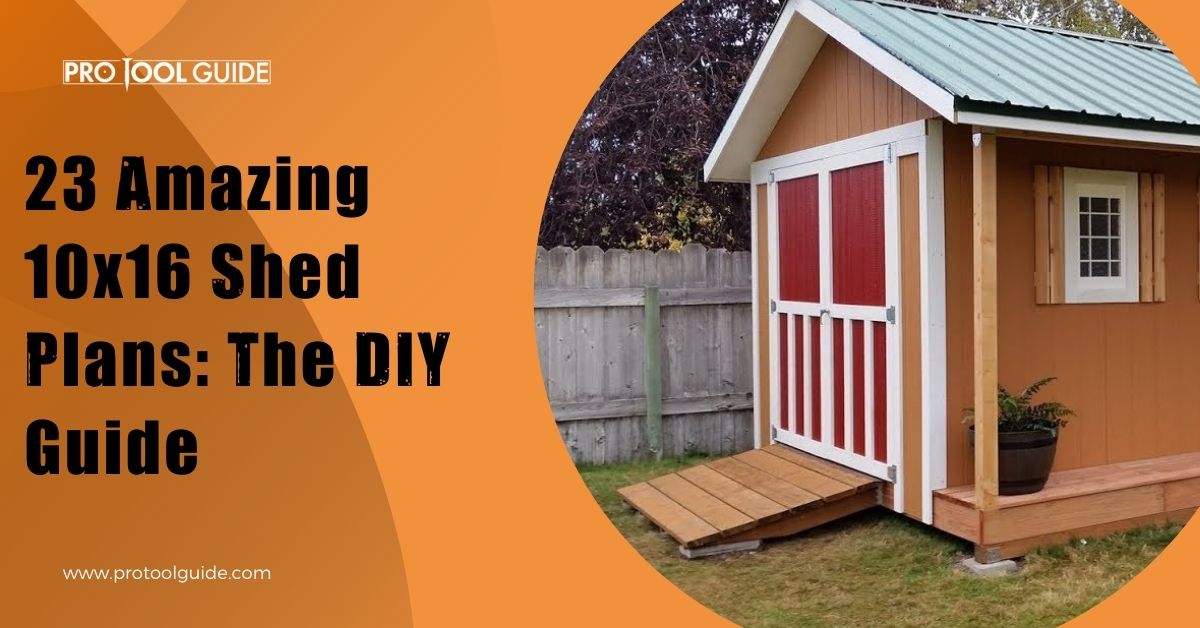
Save Big with DIY 10x16 Shed Plans Featuring 8-Foot Ceilings
Hey there, fellow DIYer! Are you dreaming of a spacious, well-organized shed to house all your tools, equipment, and outdoor gear? Building your own shed is a fantastic way to save money and create a custom space that perfectly suits your needs. And with these 10x16 shed plans featuring 8-foot ceilings, you'll have ample headroom and storage potential.
Let's dive into the exciting world of DIY shed building. We'll guide you through every step, from gathering materials to putting the finishing touches on your new haven. Ready to get started? Let's build!
Why Choose a 10x16 Shed?
A 10x16 shed strikes a great balance between size and functionality. It's large enough to accommodate a variety of storage needs, but not so big that it overwhelms your backyard. Plus, the 8-foot ceilings provide an airy and spacious feel, making it a joy to work in.
Benefits of 8-Foot Ceilings
Here's why opting for 8-foot ceilings is a smart move:
- More Storage Space: With higher ceilings, you can stack items taller without feeling cramped.
- Easier Access: Reach your belongings without needing a step ladder.
- Improved Ventilation: 8-foot ceilings allow for better air circulation, especially important if you'll be working in the shed.
- Open and Spacious Feel: Higher ceilings make the shed feel less confined and more welcoming.
Planning Your Shed
Before you start hammering and sawing, spend some time planning your shed. This will help you avoid costly mistakes and ensure you build a structure that meets your needs. Here's a breakdown of the planning process:
1. Determine Your Needs and Usage
Think about how you'll use the shed. Will it house gardening tools, lawn equipment, bicycles, or a workshop? The answer will influence the layout, storage solutions, and even the flooring you choose.
2. Check Local Building Codes
Before starting construction, make sure your shed plans comply with local building codes. This might involve permits, setbacks, and other regulations.
3. Choose a Location
Select a level spot that is well-drained. You'll want to avoid areas prone to flooding or where tree roots could damage the foundation.
4. Design Your Shed
Create a basic layout, considering:
- Doors and Windows: How many doors and windows do you need? Where should they be located?
- Interior Layout: Where will you place shelves, workbenches, and other storage solutions?
- Electrical: Do you need lighting or power outlets?
- Flooring: Will you use concrete, wood, or another material?
Materials and Tools
Once you've finalized your shed plans, it's time to gather the materials and tools. Here's a general list, but be sure to refer to your specific plans for detailed quantities:
Materials
- Pressure-Treated Lumber: For the foundation, sill plates, and floor joists.
- Framing Lumber: For the walls, roof, and rafters.
- Sheathing: For the exterior walls and roof.
- Roofing Shingles: Choose a durable option that complements your home.
- Siding: Select a siding material that suits your style and budget.
- Windows and Doors: Pick the right size and style.
- Hardware: Nails, screws, hinges, and other fasteners.
- Paint or Stain: For protecting and enhancing the shed's exterior.
- Flooring: Concrete, wood, or other materials.
- Insulation: Optional, but it can improve comfort and energy efficiency.
Tools
- Circular Saw: For cutting lumber to size.
- Table Saw (optional): For precise cuts.
- Hammer: For driving nails.
- Drill: For drilling holes for screws and fasteners.
- Level: To ensure the shed is built level.
- Tape Measure: For taking measurements.
- Safety Glasses: To protect your eyes.
- Work Gloves: For protection while handling materials.
Building Your Shed Step by Step
With your materials and tools ready, it's time to break ground on your shed project. Follow these step-by-step instructions:
1. Prepare the Foundation
The foundation is the base of your shed, so it's crucial to get it right. Choose a concrete foundation for maximum durability, or consider a pressure-treated lumber foundation if you prefer a simpler approach.
2. Framing the Walls
Cut and assemble the wall frames according to your plans. Make sure the walls are plumb and square.
3. Building the Roof
Construct the roof frame, including rafters and roof sheathing. Make sure the roof is properly sloped to allow for water runoff.
4. Sheathing and Siding
Attach sheathing to the walls and roof to provide a solid surface for siding and roofing. Then, install your chosen siding material.
5. Roofing
Install your roofing shingles, following the manufacturer's instructions. Be sure to flash around the edges and at the chimney or vents if applicable.
6. Installing Doors and Windows
Cut openings for your doors and windows, then install them securely.
7. Flooring
Install your chosen flooring material, whether concrete, wood, or another option.
8. Finishing Touches
Add any final touches, such as painting, staining, or adding trim.
Safety First
Safety should always be your top priority when working with tools and heavy materials. Here are a few important tips:
- Wear safety glasses and gloves.
- Use proper lifting techniques to avoid injury.
- Be aware of your surroundings and avoid distractions.
- Never work alone, especially on projects that involve heights.
- Always use ladders and scaffolding safely.
- Turn off power tools when not in use.
- Store tools properly to prevent accidents.
Enjoy Your New Shed!
Congratulations! You've successfully built a 10x16 shed with 8-foot ceilings, a project you can be proud of. Enjoy the extra storage space and the satisfaction of a job well done.
Remember, building a shed is a rewarding experience. Take your time, follow the plans carefully, and don't be afraid to ask for help when needed. With a little effort, you'll have a fantastic new shed that you'll love for years to come. Happy building!


No comments:
Post a Comment
Note: Only a member of this blog may post a comment.